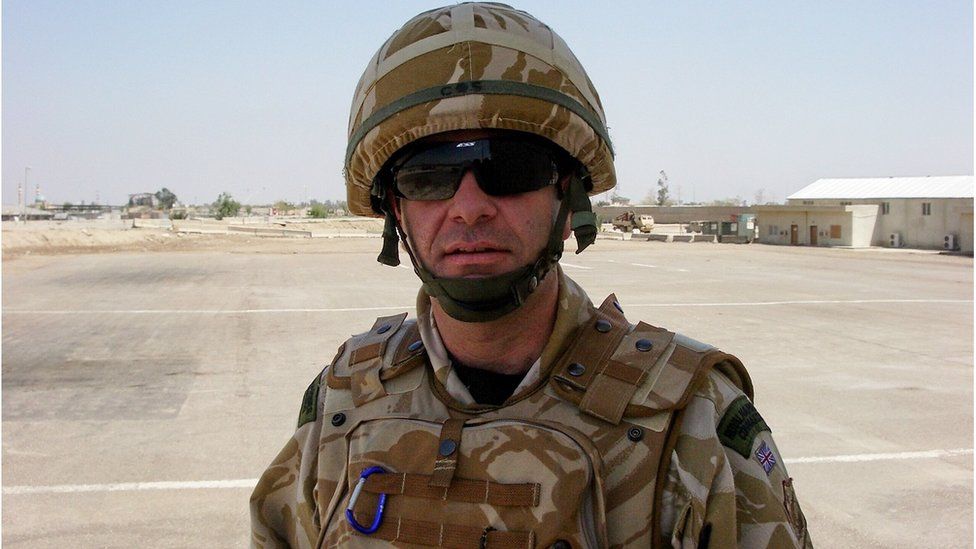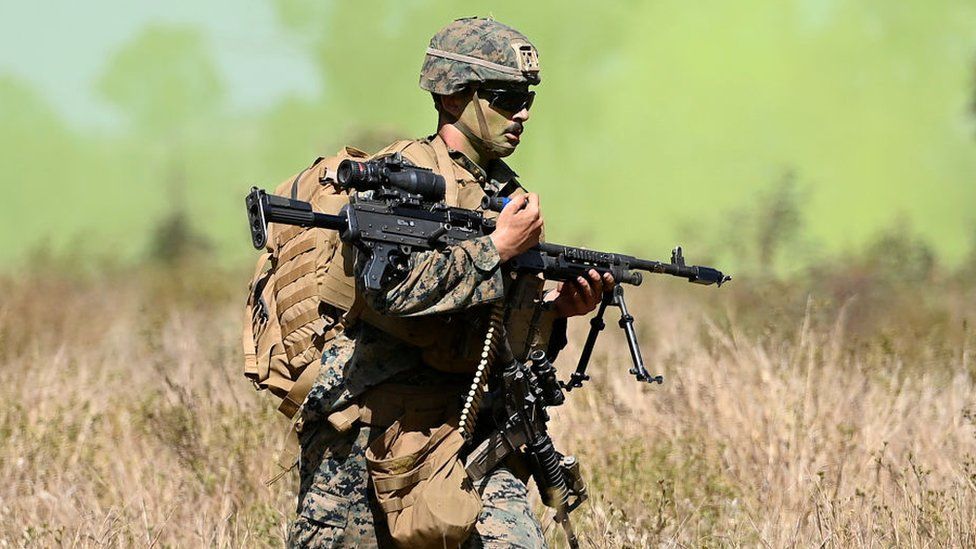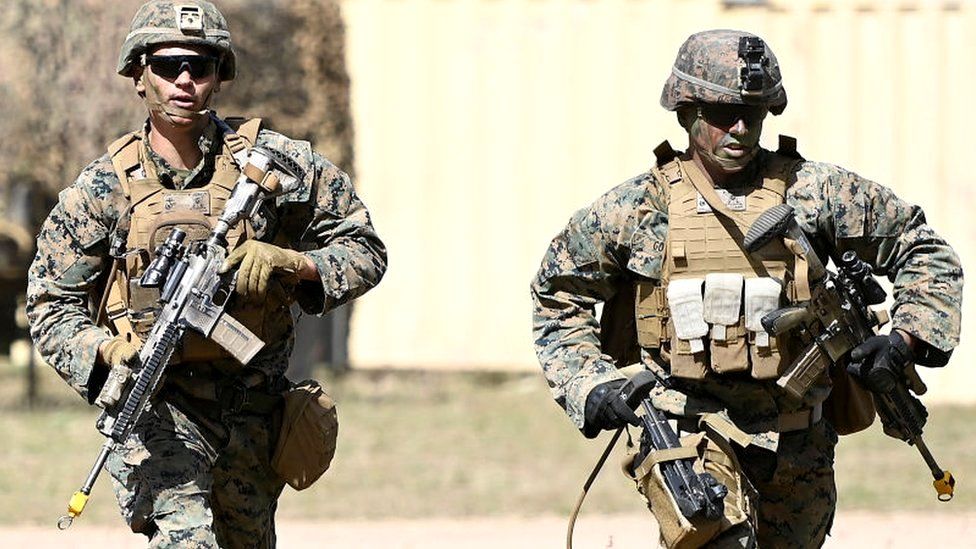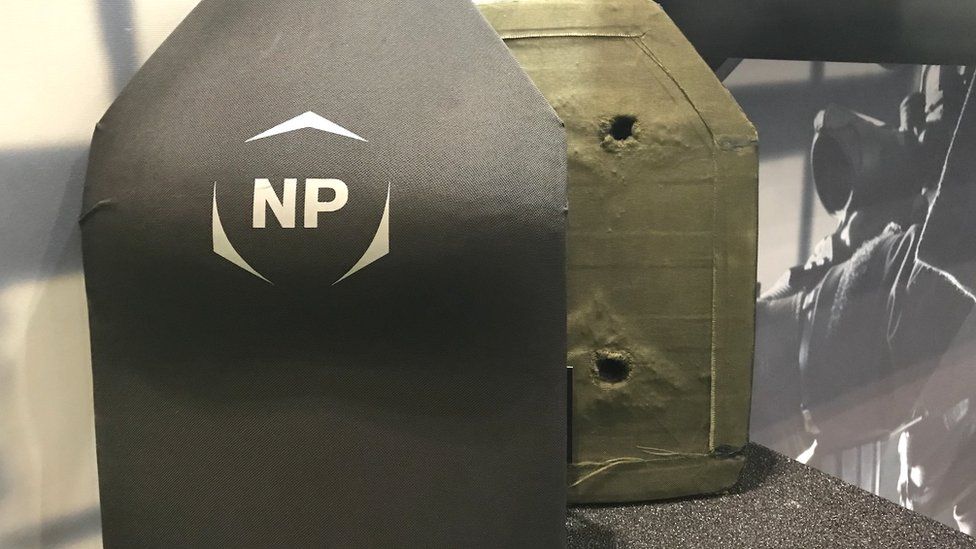En las últimas décadas, los chalecos de protección personal han tenido notables mejoras en su performance específica, pero no han podido alcanzar una reducción sustancial en su peso. Por el contrario, son más pesados que sus antecesores. Además el soldado individual lleva cada vez más carga (hasta 45kg), lo cual resulta una grave limitación para su movilidad y afecta su supervivencia. Los últimos desarrollos trabajan con nuevos materiales como el “Ultra-high Molecular Weight Polyethylene” (UHMWPE), cuyas fibras poseen una resistencia 15 veces superior al acero, para igual peso. También con nuevos desarrollos de placas cerámicas con Carburo de Boro, cada vez más eficientes. El desafío sigue vigente: obtener un adecuado balance entre peso y nivel de protección, que le permita al combatiente la movilidad necesaria para sobrevivir.

Rory Copinger-Symes retired from the Royal Marines last year, having joined up in 1983.
During his decades of service he saw a dramatic change in the equipment he was given, particularly body armour.
“Body armour evolved over my 37 years,” the retired Brigadier says. “It became more effective but frankly it got heavier, which was a problem.”
For the last several decades, modern body armour has been made from synthetic fibres such as Kevlar, combined with either metal or ceramic plates known as trauma plates.
While good at stopping bullets and other threats, that combination was heavier than previous materials which included multiple layers of ballistic nylon and sometimes fibreglass plates.
While Mr Copinger-Symes says the Kevlar body armour is “not particularly uncomfortable”, it has drawbacks.
“Obviously when worn in hot climates it is not pleasant,” he explains. “As a consequence of the weight of the body armour we would tend to limit other items carried – but weapons and ammunition were essential.”

The weight and comfort issues of body armour are common to all armed forces.
A fully equipped version of the US Army’s Improved Outer Tactical Vest, complete with four ballistic plates and collar and groin protectors, can weigh almost 30lb (14kg).
That’s a lot more than the Vietnam-era vest which weighed just 8lb (3.6kg).
Each additional pound of body armour adds to already enormous loads for modern soldiers.
With weapons, food, batteries and other gear, US infantry in Iraq and Afghanistan sometimes carried as much as 100lbs (45kg) of kit – a burden for even the fittest soldiers.
Over time, carrying such a weight can contribute to injuries. In the US, statistics from the Department of Veteran Affairs indicate that the number of veterans who retired with musculoskeletal conditions rose by more than 10 times between 2003-2009.
Prized for its strength and affordability, Kevlar has been the most common material in armour for more than 40 years.
But it is being replaced by a new material which goes by the unwieldy name of ultra-high molecular weight polyethylene (UHMWPE).
It derives strength from its very long molecules, and modern production techniques exploit that feature. Some brands of UHMWPE are advertised as having 15 times the strength of steel for the same weight.
While early versions of the materials have been available for decades, it is only in the last few years that they’ve gained market acceptance – and become the option of choice for many forces around the globe.
However, there is an added complication for the makers of body armour.
Protecting the user goes beyond catching a bullet or a piece of shrapnel. Armour also has to prevent the energy from those projectiles from being transferred to the wearer.
Currently, new materials are less effective at doing that. The vest might stop the bullet but the wearer could still die.
The common solution is to add more polyethylene and other materials to try prevent that trauma, which of course adds weight.
Colin Metzer, the director of blast and ballistics at Colorado-based firm Skydex, says that increasingly sophisticated materials will improve the situation.
For example, the ceramic plates fitted into body armour are becoming better, with newer versions using materials such as boron carbide.
“There’s a continual development of raw materials, which can then be integrated back into body armour that increases performance while decreasing weight,” Mr Metzer says.

Even modest improvements in weight or protection, ideally both, could make a lifesaving difference for soldiers or police.
Someone carrying more weight is going to be slower and less agile, a problem for a soldier trying to quickly climb a steep hill or cross a river.
“Being able to move quickly to safety can be a matter of life and death,” Mr Metzer points out. “The best case for any warfighter is not to be hit at all.”
In the longer-term, many body armour experts believe that nanotechnology, in which materials are manipulated at a molecular or supra-molecular scale, could mean extremely lightweight body armour that is more like clothing.
Fuente: https://www.bbc.com


